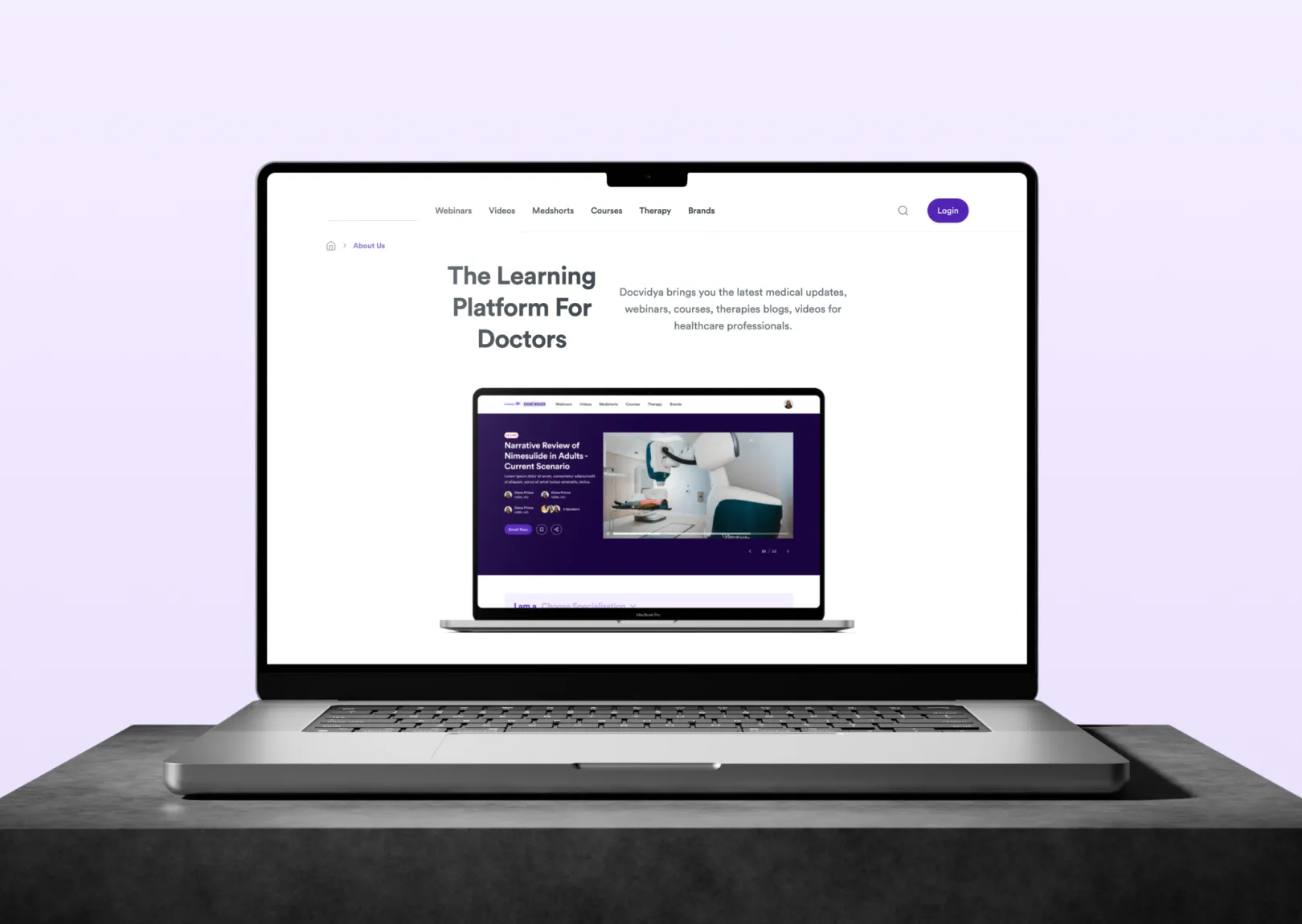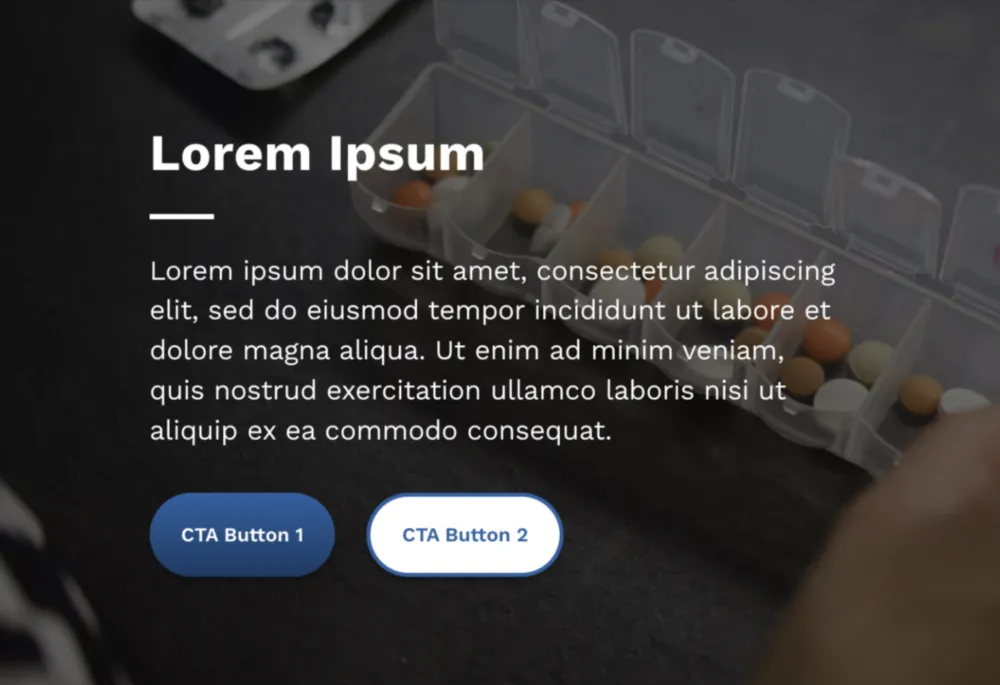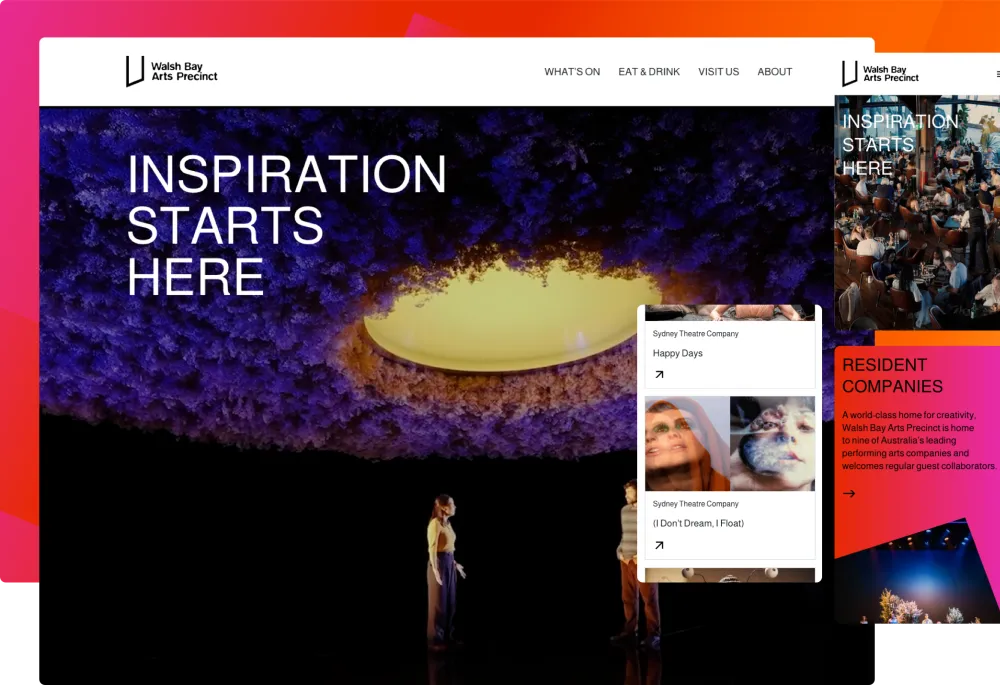Sector(s)
Overview
Doctors save lives. Nurses, specialists, and frontline health workers carry the weight of care every day. When something changes in treatment protocol, when new research emerges, or when a safety alert goes live, these professionals need to know. And they don’t have time to dig through broken systems or outdated dashboards to find it.
To support this, a multinational pharmaceutical company built a digital learning platform for medical professionals. The goal was clear: provide reliable, easy access to high-quality educational content.
Over time, the platform became difficult to manage, from poor search and scattered content to clunky workflows, manual video handling, and access issues that slowed everyone down.
We partnered with the teams behind the platform to address these issues and reimagine it around clarity, speed, performance, and long-term maintainability. The solution focused on consistent content modelling, streamlined workflows, and a scalable, component-based design system, so the right information could always reach the people who need it, when they need it most.
Challenges
The organisation’s digital library supported a wide range of healthcare professionals across roles and regions. Content included video explainers, clinical articles, live sessions, and CPD-certified modules.
Doctors could complete these courses at their own pace and, once done, instantly download a certificate. Completed certificates were also saved to their profile page for easy access and proof of ongoing professional development.
But the platform was built on disconnected systems. Key issues included:
- Search delivered inconsistent results
- Editorial teams duplicated work across siloed systems
- There was no shared taxonomy or categorisation
- Workflows lacked visibility and version control
These problems were both operational and experiential. The platform wasn’t built for the realities of publishing regulated learning content or for how healthcare professionals access it.
Every time outdated content stayed live, a healthcare professional risked missing a critical update. In their world, every detail counts. These are people who show up each day under pressure, with limited time, committed to their patients.
The platform needed to match that reality. It had to be fast, intuitive, and dependable, a space where professionals could quickly find what they need and stay focused on care.
Back to topThe approach
This was a complete rebuild. The approach began with aligning the system to how healthcare professionals access information and how editorial teams manage and publish it. Instead of adjusting individual features, the platform was rethought as a workflow-first, content-stable system.
We replaced custom pages with a component-based publishing system using Atomic design principles. Editors now work with pre-approved templates and building blocks. This keeps layouts consistent, speeds up production, and simplifies updates.
We set up a single publishing workflow. The backend CMS connects to the learning front-end through a clean API integration that supports all publishing actions: create, update, approve, publish, and archive. Content created in Doconnect flows through the system via APIs, allowing cross-platform publishing and synchronisation. User interactions such as opens and ratings are tracked to guide content optimisation.
Back to topThe solution
Structured content aligned to clinical relevance
A shared taxonomy was introduced to group content by medical domain, format, and audience. Articles, videos, events, and modules now exist in a single system with consistent taxonomy references. This helps users find accurate, relevant content and gives editors a unified tagging structure. To improve visibility across formats, we created two content types in Drupal and added a “both” tag for videos. This allowed videos to appear consistently across sections and simplified the URL structure.
Reusable components across all content types
Custom pages were replaced with a component-based publishing system built on Atomic design principles. Editors now use pre-approved templates and building blocks. This ensures consistent layouts, faster content production, and easier updates. It also removed the need for manual formatting and visual fixes.
One publishing workflow
We connected the backend CMS to the learning front-end using a clean API integration that supports all publishing actions: create, update, approve, publish, and archive. Content created in Doconnect now moves through the system via APIs and is published across platforms without manual coordination. User interactions, such as opens and ratings, are tracked to support continuous improvement.
Centralised video asset management
Video content was migrated to Brightcove and integrated with the CMS through a control module with customised sync logic. This eliminated duplicates, removed manual embed workarounds, and created a streamlined video management process.
Seamless migration for existing users
We integrated the platform with Auth0 to maintain all existing user credentials. Doctors and nurses did not have to re-register or reset passwords. Roles, access levels, and permissions were preserved without friction. New users complete a simple form, and their data is instantly synchronised between Drupal and Auth0, providing a consistent and secure experience across systems.

The outcome
What once took days now happens in hours. Publishing is faster, with no need for engineering support or coordination across systems. Content teams work independently and release updates without delay. Safety communications, training modules, and clinical updates now reach the field on time, a critical advantage in healthcare, where timing and accuracy directly affect patient outcomes and compliance.
The content experience is simpler and more focused. Everything lives in one place. Search is filtered by speciality and relevance, so HCPs see only what’s current and approved. Returning users keep their preferences. New users onboard easily. Authentication is quick, and information is easy to find. This reduces friction and increases completion rates, giving healthcare providers better access without cutting into clinical time.
Behind the scenes, content teams follow a single workflow with version tracking and transparent approvals. Review cycles are shorter. Ownership is clear. Audit readiness is built in. Editorial and regulatory teams have visibility without slowing the process.
Content is structured to keep HCP-facing material separate from general or patient-facing content, supporting compliance and reducing risk. The platform also supports personalised learning and tracks engagement in real time, helping teams focus on what matters most.
This is a shift in how regulated content is managed and delivered. It lowers operational risk, speeds up delivery, and ensures critical updates reach the right people at the right time. More importantly, it gives healthcare professionals more time to focus on care while staying aligned with clinical and regulatory standards.
High-quality content only works when it’s accessible. Even the best material is ineffective if buried in broken workflows or inconsistent systems. That’s why this rebuild focused on removing barriers, not just improving appearance, but strengthening the foundation.
Content now reaches the right users faster. Internal teams work with clarity and control. Every part of the system is built for clinical relevance and long-term stability.
This is what a healthcare learning platform should deliver by default. If we expect professionals to stay current, we owe them systems that support their work instead of slowing it down.
Drupal made it possible to move away from messy, one-off page builds and manual formatting. Instead, it supported a scalable, component-based publishing system based on Atomic Design. Editors could use pre-defined content components to build pages quickly and consistently, without starting from scratch each time. This improved publishing speed, reduced errors, and kept the design consistent across the entire platform. The team no longer had to rely on developers for every update, which gave them more control and flexibility.
Structured content with shared taxonomy
One of the biggest problems with the previous system was the lack of structure. Content was scattered, tagging was inconsistent, and users struggled to find what they needed. Drupal’s flexible content modelling solved that. The team introduced a shared taxonomy that grouped content by domain, format, and target audience. This structure made the platform easier to search and navigate, especially for time-strapped medical professionals. Duplicate content was eliminated, and the entire library became cleaner, more discoverable, and aligned to how users actually think.
Seamless integration capabilities
The platform needed to connect smoothly with the tools the organisation was already using. Drupal made those integrations straightforward. It worked cleanly with Auth0 to preserve user credentials and handle authentication without forcing users to re-register. It also integrated with Brightcove, so video content could be managed within the CMS instead of being uploaded separately and embedded manually. On top of that, the API integration with Doconnect allowed for real-time content creation, updates, and publishing across platforms. Everything stayed in sync, and the entire system functioned as one.
Centralised content control
Before the rebuild, editorial teams were spread thin across disconnected systems. Content was duplicated, workflows were unclear, and updates took longer than they should have. Drupal allowed the entire publishing process to be centralised. Editors now use one system with version control, audit history, and clear approval paths. This has reduced delays, improved accuracy, and given teams full visibility into what’s live, what’s pending, and what needs review. It brought order to the chaos and made it easier to manage content that needs to be accurate, timely, and trusted.
Future-proofing and scalability
The goal wasn’t just to fix what was broken. It was to build a platform that could grow over time and adapt to changing needs. Drupal’s modular architecture and open-source foundation made that possible. It gave the team room to implement personalised learning journeys, role-specific content access, and detailed engagement tracking. They didn’t have to reinvent the wheel to scale. The platform now supports long-term strategy while staying stable and easy to manage in the short term.
Migration benefits
Platform migrations can be disruptive, but this one wasn’t. Drupal’s flexibility made it easier to migrate users and content without breaking authentication or forcing anyone to start over. Thanks to integration with Auth0, existing users kept their credentials, roles, and access levels. From the user’s perspective, the transition just felt like a better, simpler experience. For the teams managing content, the migration brought structure without requiring a complete rebuild from scratch. It was a clean shift with minimal friction.

Technical Specifications
Drupal version:



